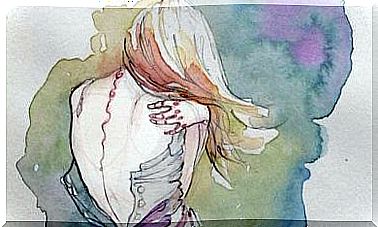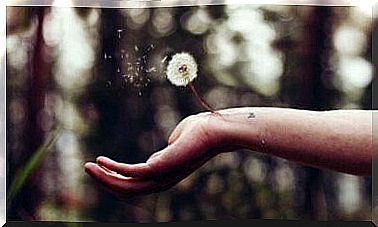Emotional Weeping: A Holy Remedy To “drain” The Soul
There are those who cry in silence, for a brief moment and in discreet solitude. However, the only way to start over, to drain sadness, frustration and tension is through emotional tears. True relief is only possible through those tears that are shed like oceans tempered by a broken voice.
Psychology experts point out that few behaviors make us as human as laughter and tears. In fact, both emotional expressions have many aspects in common. They have, for example, a “preservation” factor. That is, when laughter or tears start, they have a fixed duration that cannot be easily shortened. Furthermore, both achieve the same goal: to make us feel better.
On the other hand, we all know that emotional crying – the one that causes real outbursts – is not well regarded socially. On the contrary, the discreet tear that slips into a political discourse or into a trembling gaze moved by pride or by the contemplation of beauty is more accepted.
Perhaps this is why most of us avoid what is known as “vocal weeping”. It’s always more comfortable to look for a dark corner where no one sees us to let the tears flow, but in discreet silence. We don’t want anyone to hear us, see us and find out that we’re not as strong as we appear to be.
However, psychiatrists and neurobiologists are clear in saying: the outburst, whether alone or with someone, needs to be true, expressive and liberating. Anything that implies a certain “self-control” continues to generate tension and stress. Weeping is necessary for the human being.
Emotional crying, a conduct with different purposes
Most babies cry when they come into the world, but their tears have no tears. The brain mechanism that will cause your tear glands to secrete tears is not yet mature. However, their tears already fulfill an essential biological function: ensuring their survival by connecting with their peers to receive attention, care, comfort and affection.
Similarly, as we grow and mature, crying fulfills different functions, both interesting and useful.
First, one of the purposes of crying is to eliminate toxins from the body caused by stress and anxiety. It is not necessary for something bad to have happened, to feel sad or distressed. We also sometimes cry out of sheer wear and tear, and doing so is tremendously healthy.
The University of Los Angeles School of Psychiatry (UCLA) has shown in research that crying also serves a warning function. It’s like a touch of attention to one’s conscience. There are times when we feel frustrated, confused by something we should react to and don’t.
However, simply letting the tears flow initiates sophisticated biological mechanisms to allow us to see things more clearly.
Scientists explain that emotional crying is actually an exceptional evolutionary innovation. It’s not just about “letting the tears fall”. Deep, authentic crying that allows us to fully discharge activates the neurotrophin function. It is a type of protein capable of promoting neurological plasticity.
In other words, he “restores us”. It encourages new learning and helps us to be more creative to put into practice new behaviors that will allow us to adapt much better to our own surroundings.
The weeping, vulnerability and comfort
Professional responsibilities, for example, make us need moments alone to cry for a few seconds. Doctors, nurses, firefighters, police… Many are looking for a moment alone to unload dramas, everyday tensions. However, sometimes these moments are not enough. There is no real “restoration”. Little by little comes overload, blockage, anxiety… And a thorn that no longer allows breathing.
The same goes for everyday problems. With words that remain silent. Losses that are not faced. With the pain that throbs but that we strive to disguise. Why is it so hard to ask for help? Why does emotional crying make us feel so vulnerable in front of other people?
Knowing how to give support is an art that not everyone has mastered
The reality is as hard as it is obvious: not everyone knows how to give support. With words like “Now why are you crying?” or “Come on, it doesn’t matter” , what is achieved is to block the person even more. Intensify negative emotion and despondency.
- When we need to talk to someone, it’s a good idea to look for the right person. Not everyone is good, not everyone has the right strategies to facilitate this intimacy, this facility to send away what hurts, what holds us back. Good friends, and certainly psychologists, can be the best guides in this process.
- Letting go of emotional weeping in front of someone is not a reflection of weakness or vulnerability. It is the step that someone strong takes to release tensions, fears and sorrows with the purpose of rebuilding themselves again, so that they can recover and receive help.
- On the other hand, giving support is not giving a hug. It’s not saying “it’s okay”. It is to be intuitive in order to facilitate the release, knowing how to provide it. It is knowing how to say “I’m here with you” without this being an imposition, and obviously, without judging. It’s being discreet while we’re present, bringing closeness.
To conclude, although it is difficult to allow yourself these moments of true emotional release, whether alone or in company, we need them from time to time. Draining the soul is a biological and psychological necessity. We cannot forget the classic phrase “expressed emotion, overcome emotion”.









